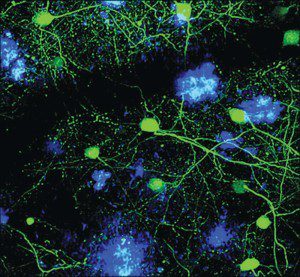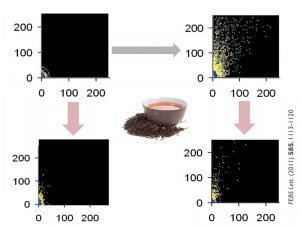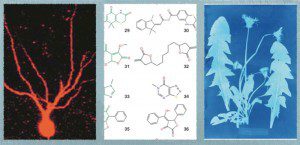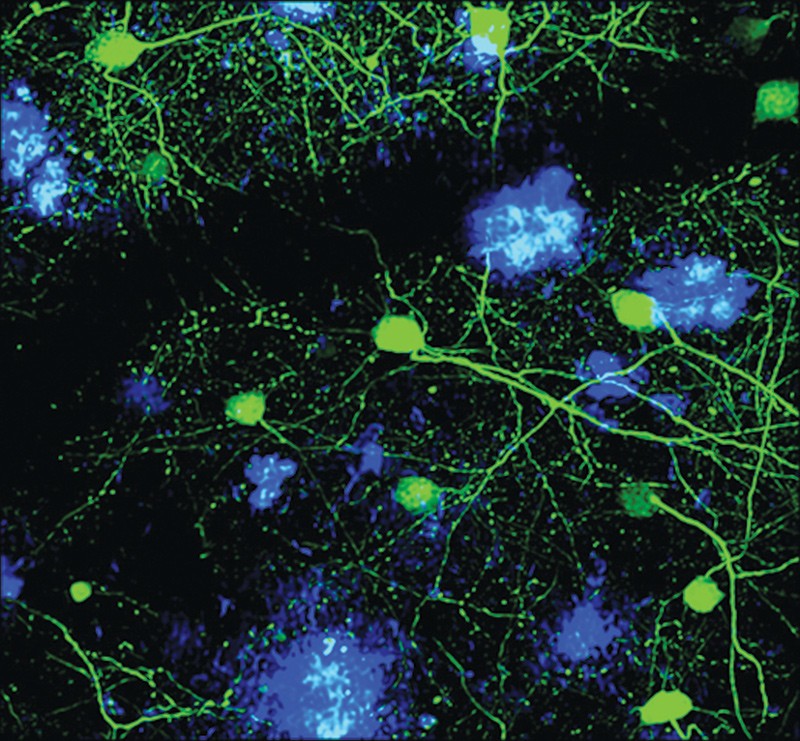Local research is finding new compounds in the Mediterranean diet that can combat Alzheimer’s and Parkinson’s disease. Words by Dr Neville Vassallo.
On a dull November day in 1901, Dr Alois Alzheimer (1864-1915), senior psychiatrist at the Asylum for the Insane and Epileptic (Frankfurt am Main), sat down and greeted his new patient.
“What is your name?”
“Auguste.”
“Family name?”
“Auguste.”
“What is your husband’s name?”
“I believe Auguste.”
“Your husband?”
“Oh, my husband…”
“Are you married?”
“To Auguste.”
So began the conversation that was to change medical science forever. Auguste D. would become the first patient diagnosed with Alzheimer’s disease, the most common cause of dementia worldwide.

Dr Alzheimer was known as “the psychiatrist with the microscope”, since he spent years peering down a microscope looking at slides of brain tissue to find the origin of brain diseases. Five years after interviewing Auguste D. he connected the deposition of “plaques” in the brain to dementia. The microscope lab he set up at the University of Munich had borne fruit. Amongst Dr Alzheimer’s students was the young Fritz Heinrich Lewy, who in 1912 made another major discovery. He described the neuronal “tangles” found in the brains of Parkinson’s disease patients. Parkinson’s disease is the most common movement degenerative disorder, a relentless condition found in the elderly leading to tremors, muscle rigidity and slow movements. Today, we know that these tangles are clumps of sticky protein called amyloid, which cause both Alzheimer’s and Parkinson’s disease. The protein clumps kill dopamine neurons over many years, long before any effects are seen. The protein is toxic to nerve cells, so understanding this protein could lead to developing a powerful new class of medicines.
At the University of Malta, I lead a group whose ambitious goal is to develop new treatments to cure these diseases. Our approach is to identify small-molecule drug-like compounds and natural extracts, which hinder the initial aggregation of sticky amyloid or keep their stickiness under control. Such therapy would delay Alzheimer’s and Parkinson’s disease. But where to look for these vital compounds and extracts? The answer: in Mother Nature’s ‘drug cabinet’.
Over the past decade, several studies have shown that a healthy Mediterranean diet helps stave off many age-related conditions. These epidemiological studies involve observing thousands of people and their habits. They have linked a high consumption of fruits, vegetables, whole grains and olive oil, together with a glass of red wine (not more), to a lower risk of dementia and Parkinson’s disease. Risk can even be reduced by 40%, nearly cut in half. The Mediterranean diet is particularly rich in naturally occurring compounds called polyphenols. Dietary polyphenols form a large class of compounds being the most abundant antioxidants in our diet. Their health benefits include helping prevent cardiovascular disease, cancer, and brain disease linked with the amyloid protein.
“Over the past decade, several studies have shown that a healthy Mediterranean diet helps stave off many age-related conditions”
In the lab, my team first replicate the formation of the sticky amyloid aggregates to simulate the initial disease process.

Next, we use innovative, robust molecular screens to identify Mediterranean diet polyphenols and extracts that inhibit and/or destabilise protein clumping. Such screens use technology like fluorescence correlation spectroscopy, which uses a laser beam to detect single molecules. This technique is ideal for studying the clumping of proteins and allows us to directly visualise the aggregation of proteins that lead to the disease. By applying different compounds on the proteins we monitor how effective a drug is over time. My team also developed a method (lipid vesicle permeabilisation) to assess how sticky amyloid clumps are to structures within a cell. Using this technique, we could tell whether certain compounds reduced stickiness. These agents are known as anti-amyloid and can help treat disease.
By partnering with the Institute of Cellular Pharmacology (ICP) Ltd, we have access to technology that can produce high quality vegetal extracts on a large scale. Extracts are made from the produce of Maltese farmers and from a Mediterranean algae harvested by local divers. ICP Ltd. provide us with extracts from the Mediterranean prickly pear and pomegranate fruits, and an extract from the marine algae Padina pavonica. These readily available supplies allow us to test for anti-amyloid agents, in our hunt for new treatments.
Results obtained over the past four years are highly encouraging. We have identified three polyphenols (apigenin, baicalein, nordihydroguaiaretic acid) and two plant extracts (black tea, Padina pavonica) that repeatedly show a striking anti-amyloid activity in all the assays described above. The compounds all prevent toxic amyloid clumps from forming, which means they could be useful for treating these brain diseases. The same five compounds could also neutralise the inherent stickiness of amyloid clumps to structures within cells called membranes.

Protecting a nerve cell’s membrane is essential for its survival. We published these results in several top international scientific journals including the Biochimica Biophysica Acta (one of the 100 most influential journals in Biology & Medicine).
These publications helped us attract the attention of the Ludwig-Maximilians-University of Munich, whose researchers are helping us expand the research project into animal disease models. Testing our compounds in these models is essential to find out if our compounds will help combat the disease in human beings. Data from our project has also helped the national Department of Health favour our traditional Mediterranean diet. All of this research has only been possible because of funds from the University of Malta and the Malta Council for Science & Technology (MCST).
Natural products from the Mediterranean diet and marine plants are providing exciting new directions in medicinal discovery. Although useful, these findings still need translation into therapy by further testing in animal models. Our final goals remain in sight: preserving the function of the human brain into old age, so that memories and movements will no longer be lost with dying nerves.

Find out more:
– Vassallo, N. (Editor). (2008). Polyphenols & Health: New and Recent Advances. Nova Publishers, New York, USA.
– Caruana, M., Hoegen, T., Levin, J., Hillmer, A., Giese, A. and Vassallo N. (2011). Inhibition and disaggregation of alpha-synuclein oligomers by natural polyphenolic compounds. FEBS Lett. 585, 1113–1120.
– Gauci, A. J., Caruana, M., Giese, A., Scerri, C. and Vassallo, N. (2011). Identification of polyphenolic compounds and black tea extract as potent inhibitors of lipid membrane destabilization by amyloid beta-42 aggregates. J. Alzheimer’s Dis. 27, 767–779.
– Högen, T., Levin, J., Schmidt, F., Caruana, M., Vassallo, N., Kretzschmar, H., Boetzel, K., Kamp, F. and Giese, A. (2012). Two different binding modes of alpha-synuclein to lipid vesicles depending on its aggregation state. Biophys. J. 102, 1646–1655.
– Caruana, M., Neuner, J., Högen, T., Levin, J., Schmidt, F., Kamp, F., Scerri., C., Giese, A. and Vassallo, N. (2012). Polyphenolic compounds are novel protective agents against lipid membrane damage by alpha-synuclein aggregates in vitro. Biochim. Biophys. Acta. (Biomembranes) doi:10.1016/j.bbamem.2012.05.019





Comments are closed for this article!